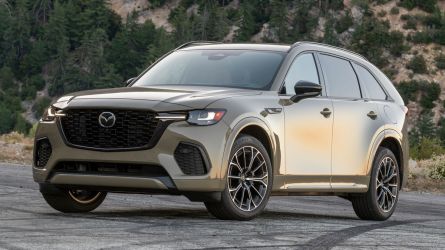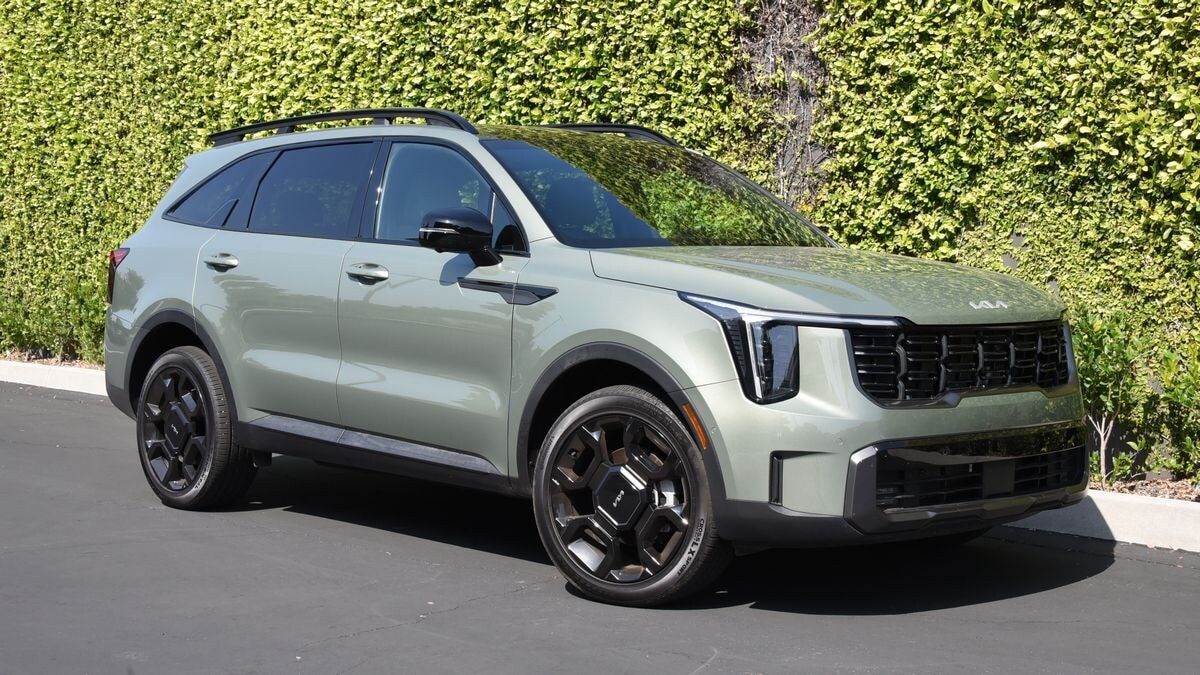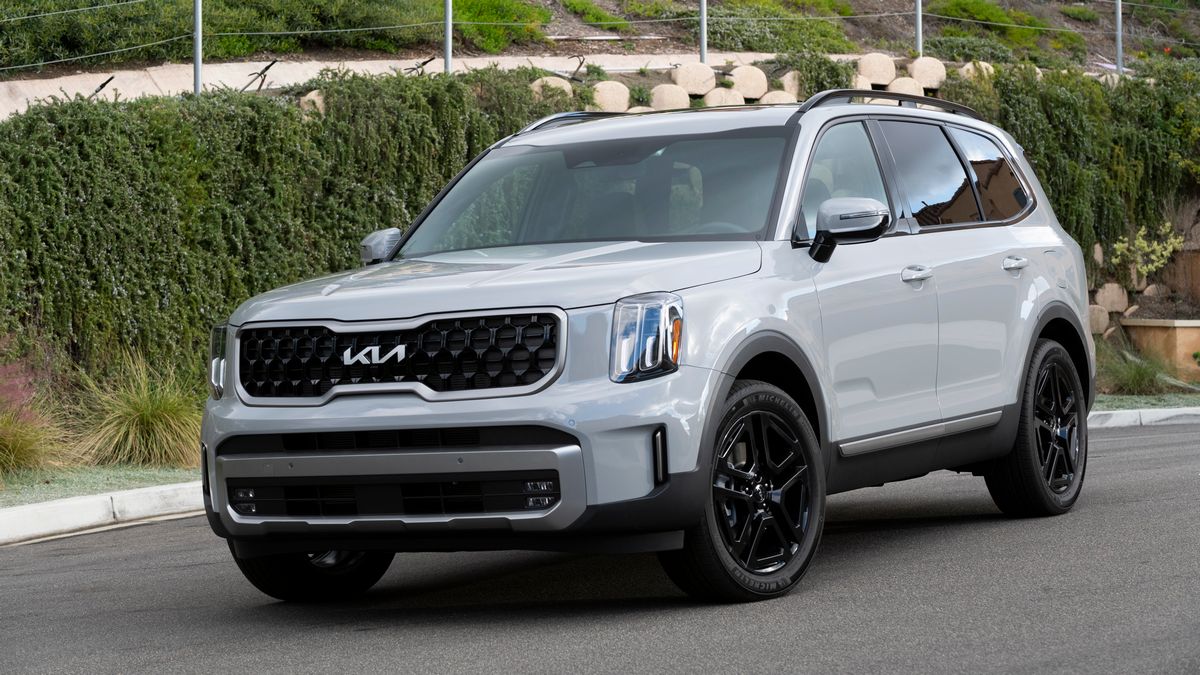- The 2026 Hyundai Santa Fe pairs blocky SUV styling with a versatile 3-row interior.
- Pricing starts at $36,400, including the destination fee | Price it your way
- On sale now | See Hyundai Santa Fe models for sale near you
Hyundai embraced the bigger, bolder, better design mantra when it redesigned the Santa Fe in 2024. But how functional is the interior of one of the top-rated 3-row crossover SUVs?
Even though the fifth-generation Santa Fe grew in almost every dimension, the 2026 Hyundai Santa Fe is still nine inches shorter and has less cargo and passenger space than Hyundai’s largest vehicle, the redesigned 2026 Hyundai Palisade.
Still, for shoppers looking for a midsize SUV without the additional size, weight, and everyday third-row needs of a Palisade, the Santa Fe measures up as a sufficiently roomy vehicle in the midsize segment.
Like the Palisade, it comes with gas-only or hybrid powertrain options. A turbocharged 2.5-liter 4-cylinder engine makes 277 horsepower and 311 lb-ft of torque. An 8-speed automatic transmission and front-wheel drive (FWD) are standard, while all-wheel drive (AWD) is optional. The Santa Fe Hybrid has a 1.6-liter turbocharged 4-cylinder gas-electric combo making 231 hp and 271 lb-ft.
Clever packaging of the hybrid model only shaves one cubic foot of total passenger space. The small 1.5-kWh battery pack sits under the front passenger seat, so the floor is raised about an inch or two over the non-hybrid. It’s hard to notice unless you’re looking.
Santa Fe Passenger Room and Comfort
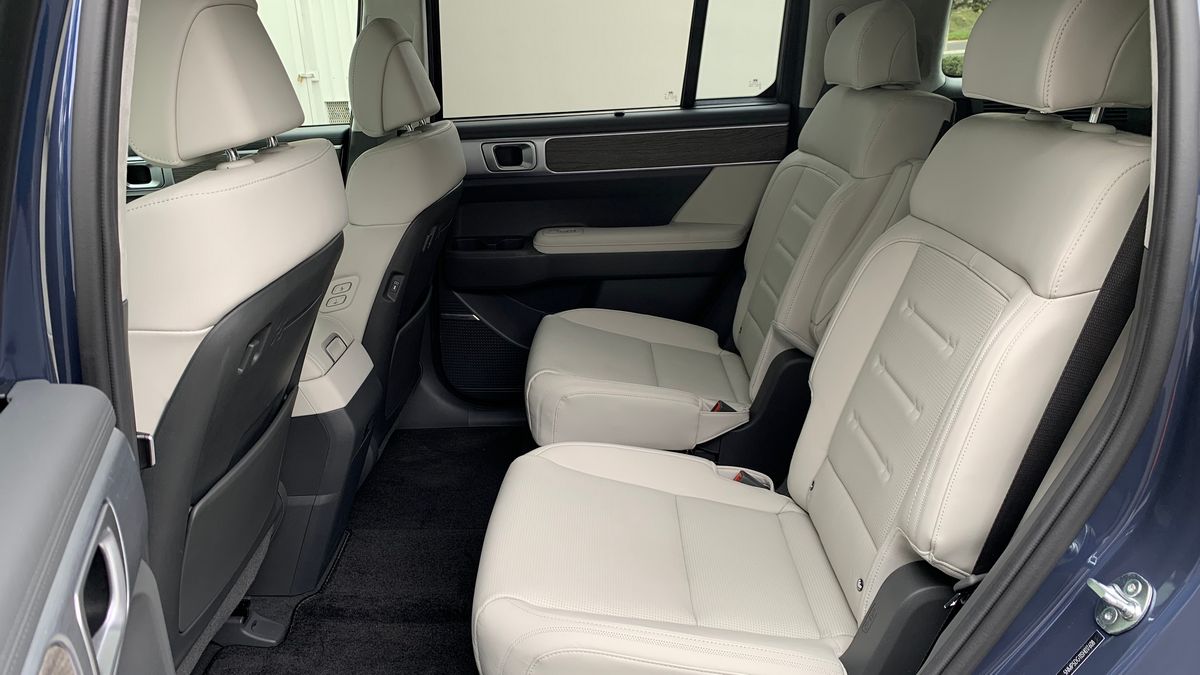
The 2026 Santa Fe seats up to seven passengers. For greater comfort, shoppers can swap out the second-row bench seat for pampering captain’s chairs, which come standard on Limited and Calligraphy trims. The downside is that you lose a seat and can only fit six people.
Hyundai introduced a new base SE trim for 2026, which lowers the starting price but also cuts some comfort features. The SE has cloth seats instead of synthetic leather upholstery on the SEL. It also lacks a power driver’s seat and heated front seats, standard on the SEL. Otherwise, the front seats have ample support and good side and thigh bolstering. Available features include a Relaxation Comfort seat with a leg rest that allows you to recline the seat nearly fully, as if lying on a chaise lounge. Just not while driving, of course.
Second-row passengers also benefit from the Santa Fe’s boxy design, with 42.3 inches of legroom, one of the most spacious in the class. Santa Fe’s second-row captain’s chairs have a function to adjust the angle of the cushion, which is great for accommodating passengers of various sizes.
One feature we love is the USB charge ports on the sides of the front seats, which allow easy charging from the back. Another neat feature is a storage cubby that pulls out from the center console between the front seats. This lets second-row passengers safely stow their charging devices, headphones, or any of the stuff of connected modern life. The console cover also opens from the front or rear, making more storage accessible to rear riders. Few other midsize SUVs have such thoughtful family considerations.
Santa Fe Third-Row Space
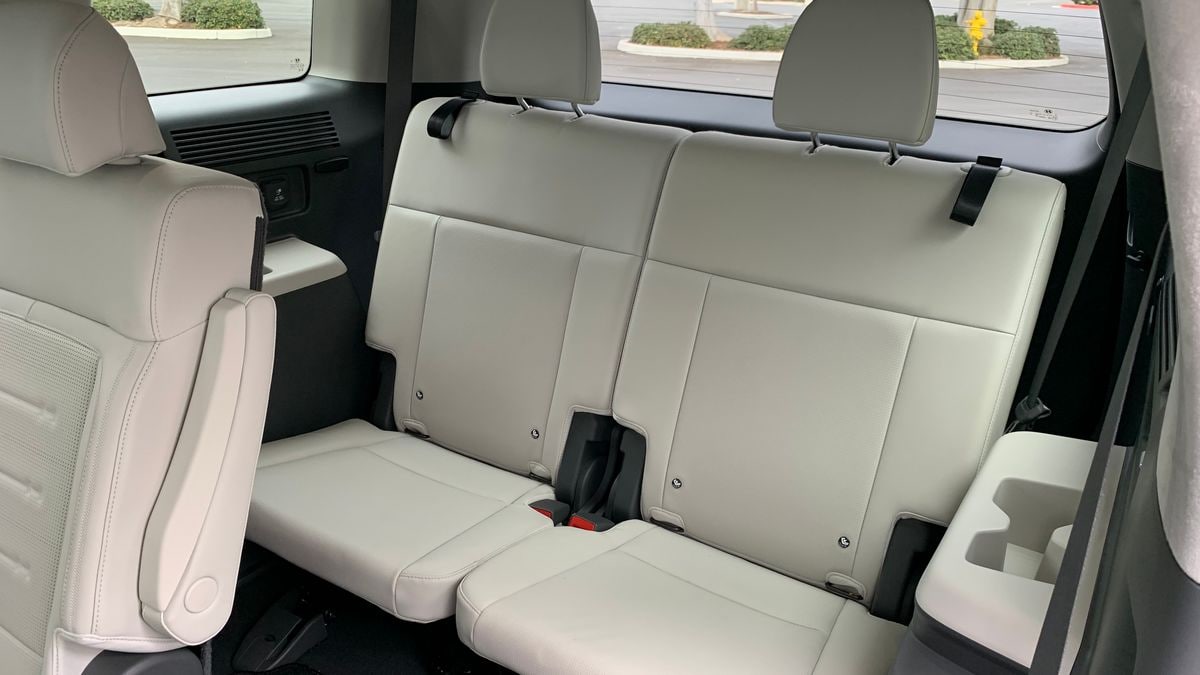
The third row is less generous and is best for grade school passengers on short trips. With only 30 inches of legroom, it works well enough for carpool duty and to shuttle the pee-wee team to practice. Maybe a third child could negotiate more space from their older siblings in the captain’s chairs and carve out a nook back there for road trips.
Otherwise, it’s a cramped proposition. For an average-sized adult, your knees sit higher than your hips, making for an awkward third-row seating position. For more functional space, consider the larger Hyundai Palisade.
One other quibble is on top trims with power-folding captain’s seats. They take a while to slide forward, though there is a manual bar under the seat to move it forward quickly. Impatient types (guilty as suggested) might prefer the manually operated bench seat in the second row.
Santa Fe Cargo Room and Flexibility

The third row might be more often stowed flat to make a roomier cargo area. With the seats up, it only has 14.6 cubic feet of cargo space, which is big enough for four carry-ons. That fifth passenger’s rollaboard might need to sit on top of the other four.
Power-fold the third-row seats from the cargo hold, and it expands to a much roomier 40.5 cubic feet of space. Fold down both rear rows, and it measures out to 79.6 cubic feet — not quite minivan proportions, but still a good amount of space to be a weekend warrior back and forth to the home improvement store.
One notable design feature of the Santa Fe is its wide-open tailgate. Boxy like the rear, it was designed to optimize the whole space, so even the hinges and arms are out of the way. It’s great for Costco runs and tailgating alike. It also makes for a nice sunshade or cover from rain.
Santa Fe Features and Tech
The Santa Fe wears a modern digital skin centered on a user-friendly 12.3-inch touchscreen. It’s good enough that you might not miss the simpler analog days. Hyundai equips it with wireless Apple CarPlay and Android Auto. Mid-grade and higher trims also have a 12.3-inch digital gauge cluster under a single curved piece of glass with the touchscreen. All but the base SE have at least one wireless device charger on the console, and six USB ports, including two for third-row passengers.
Available features include a Bose 12-speaker sound system and a massive dual-pane sunroof. Hyundai emphasizes safety with a comprehensive suite of standard driver-assist systems, including adaptive cruise control.
Santa Fe Materials and Design
The cabin reflects the broad, boxy look of the exterior with a low and wide dash that visually stretches out the cockpit and adds a feeling of space and roominess. Hyundai migrated the gear shifter to an electronic dial on the steering column, similar to the brand’s electric vehicles. It opens up all kinds of space in the center console, with a tiered storage shelf topped by up to two wireless device charges in smart, easy-to-reach locations.
The low dash and its built-in storage tray, as well as deep door pockets, reflect the thoughtful intent of every space inside the Santa Fe. The lower dash has plenty of plastic, and the base SE trim limits the convenience features and cost, but even so, the Santa Fe’s smart interior is a winner.





